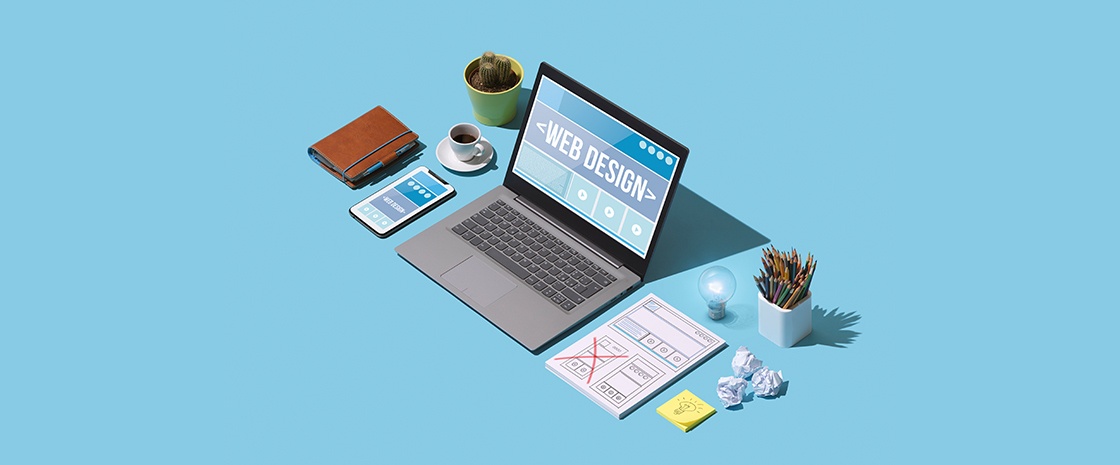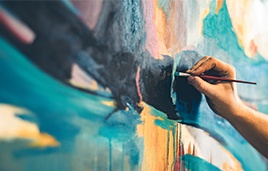In recent years, website building software has become a readily available commodity. Almost anyone can find an online service that allows users to quickly assemble a website using preset widgets and text/image areas, but just giving someone some paint doesn’t make them Rembrandt. If it did, we’d recommend taking a short break and getting those used paints from the garage sale across the street. While the quick and easy route is tempting, why is a more comprehensive design process beneficial? What are some steps that lead to effective website design and how does that look from a user experience standpoint? How can we build an effective website together, one that’s custom, catered to the client, and intuitive to the user? If you were asking these questions already, play the lotto today because you’re in luck. Let’s take a brief look at some steps you can take to improve your website or what a design team should consider if they’re attempting to do so on your behalf.
Research, research, and research… Did we mention research?
A very important initial part of the design process is knowing your business. What is your mission, vision, and how do you want that effectively conveyed to your users? When a design team is brought it in, it’s paramount that they do more than just cursory research on your company or checking the boxes you’ve laid out for them. This step is knowing what questions to ask and taking the time to learn a client’s unique goals, needs, and wants.
Is your branding in good standing?
Branding plays a role in nearly every step of the design process. From the beginning, it is pivotal to understand your company voice, tone, personality, and overall identity. The colors, imagery, and even visual layout also communicate a message to the user that’s just as powerful as any sales pitch or smooth copy delivered on your pages. A designer should be asking, “What message do you, the client, want to convey and what colors and imagery will convey and reinforce that?” Pretty colors are important. Any design firm will pride themselves on creating visually pleasing graphics, colors, and typography, but until they know and understand your brand identity and your target audience can they truly build an effective site. This is where form meets function and where visual design meets usability.
If have no branding currently in place or need to refine your brand image, it’s simply an opportunity to establish an identity that will lay the ground work for effective design.
Learning the User
Knowing the audience who visits your site is just as important as knowing yourself. Through avenues such as website analytics and user data, you can begin to work through how to best communicate with your target audience. Even just basic demographic information such as age, ethnicity, and gender can affect what visual language will be most effective to communicate your message to the user. If you don’t yet have a website to gather analytics from, you have an opportunity to define who your target audience is and plan for how to best communicate with them.
Who’s number one?
The user should be considered at any and every stage of the design process. When you hire a design team, you are their client, but so too is your target audience. Creating a site that is beneficial to your audience as well as to you, is what separates a great site from an “ehhh well it’s decent” site.
Did you remember to bring your vows?
Of course you want your site to be beautiful, but also feel familiar, intuitive, natural, and easy to navigate. User testing and website analytics are two tools that help achieve that balance of aesthetics and functionality. You don’t want visuals on the site to take away from how easy the site is to navigate and also you don’t want to technical limitations to curtail the visual design. The best website designers are working with a developer behind the scenes who will actually put the site together. The marriage between these two is a key part of the design process. The designer will say, “Here’s what I want.” The developer will say, “Here’s how I can build it.” Once your site is launched, this relationship will continue to pay dividends. A good development team will work collaboratively with you and your designers to lay the groundwork for future site enhancements as you respond to evolving user needs and begin to refine the site over time. Version 1 is only the beginning.
There’s a better way.
It might be tempting to utilize flashy and affordable online tools to build a cute website or revamp your current site, but the drawback is sacrificing custom website solutions for cookie cutter widgets that appeal to a large base. For some, that cookie cutter website tool might be what you need. However, if a custom site solution is better for your business, crafting a company identity, keeping the user first, and working diligently with designers and developers, are all tactics that will always lead to better website design.





